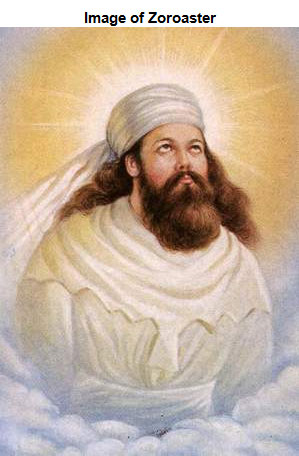Religion involves the beliefs and practices that reflect recognition in a power higher than man. As you learn more about the selected religions in this lesson, it is important to know how each religion may be classified.
| Monotheism | The belief of one god |
| Polytheism | The belief in one or more gods |
| Syncretism | The combination of vastly different beliefs |
| Animism | The belief that living and non-living things have souls |
This section will focus on monotheism and its development over time. Many of today’s religions practice monotheism, but that has not always been the case. Many of the ancient civilizations practiced polytheism, the belief in one or more gods. Additionally, most of these religions involved worshipping nature or supernatural powers.
![]() Scroll over the map below to learn more about two of the river valley civilizations: the Egyptians and the Mesopotamians.
Scroll over the map below to learn more about two of the river valley civilizations: the Egyptians and the Mesopotamians.
Answer the following questions in your notes about Egypt and Mesopotamia.
Interactive popup. Assistance may be required.
Both ancient Egyptians and ancient Mesopotamians were polytheistic. Both believed that each city in its respective civilization was protected by a god. Both worshipped gods of nature.
Interactive popup. Assistance may be required.
Ancient Mesopotamians used the statues to pray to their gods.
Interactive popup. Assistance may be required.
The important gods of Ancient Egypt were Osiris, god of the Nile, and Isis, the goddess of fertility.
As the river valley civilizations began to decline, new civilizations began to emerge in other parts of the world. Religion was an important part of the new civilizations; however, their beliefs and practices were different from those of ancient civilizations. One of the most important changes of the new civilizations was the practice of monotheism. It is theorized that many people of the new civilizations started to question events in the world and rejected the religions of their forefathers.

It is unclear which monotheistic religion appeared first, but some theorists believe that Zoroastrianism, (click here to hear the pronunciation), the belief in one god called Ahura Mazda, began between 6000-600 BC in Persia, near present-day Iran. The actual time of its beginning is uncertain. Zoroastrians believe that the prophet Zoroaster (pictured above) was the messenger of Ahura Mazda and that each follower is responsible for bringing good to the world. Zoroastrians believe that elements such as fire and water are pure. Followers of Zoroastrianism pray several times a day and have a sacred text called the Avesta. Today, there are fewer than 200,000 followers of the religion.
Click on the link below to watch a video about Zoroastrianism. Answer the questions that follow in your notes.
Interactive popup. Assistance may be required.
Norooz celebrates the official arrival of spring.
Interactive popup. Assistance may be required.
Light is essential to Zoroastrians because it symbolizes knowledge and wisdom.
Interactive popup. Assistance may be required.
The mirror is another sign of light; followers get to see how they look at the beginning of the year.
Interactive popup. Assistance may be required.
The path of Asha, the law of nature, will help followers make the universe a better place for future generations.
Other theorists believe that the first monotheistic religion is Judaism, which was founded in the Middle East around 2000 BC. Judaism quickly spread to locations far from its originating location. Soon other monotheistic religions, such as Islam and Christianity, began to spread as well.
The next section provides additional background information on the major religions of the world.
Sources of images used for this section as they appear, top to bottom: